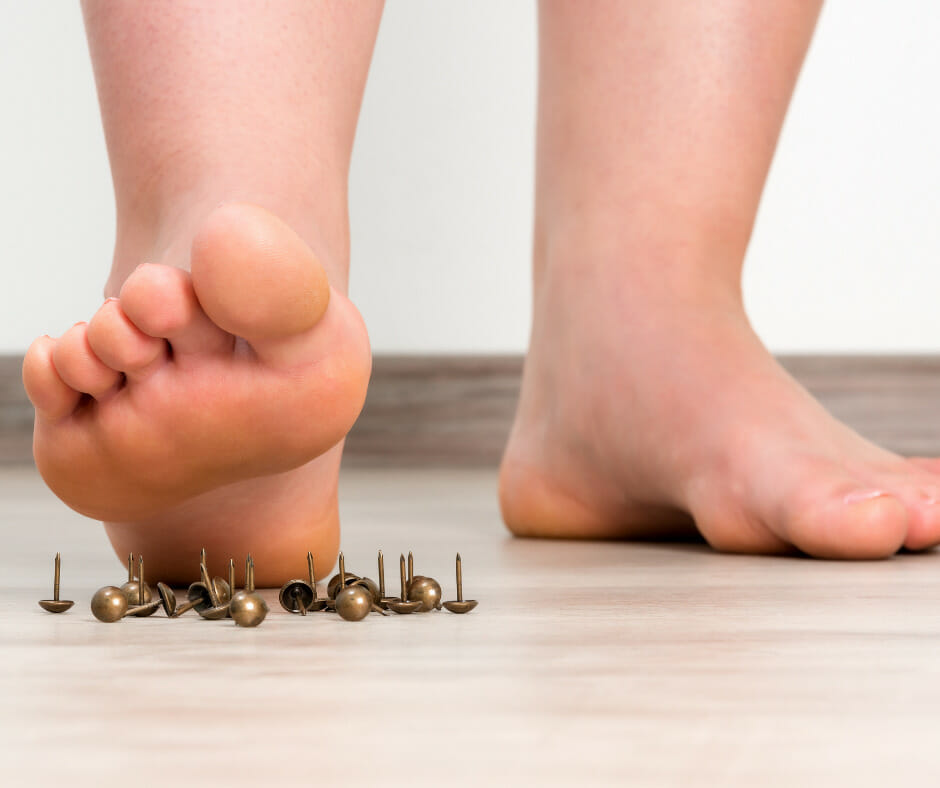The 26 Review
- What is Neuropathy Nerve damage that causes weakness, pain, and tingling usually within the hands and feet
- Causes Diabetes, injuries, infections, exposure to toxins, genetics, chemotherapy, excessive alcohol use
- Symptoms Pain, numbness, weakness, pins-and-needles sensations, and burning sensation
- Diagnosis Physical examination, electromyography test, nerve conduction study, epidermal nerve fiber density biopsy
- Treatment Pain medications, prescription medications, nerve block, transcutaneous electronic nerve stimulation (TENS), and electrical stimulation therapy

Let’s take a closer look…
Neuropathy occurs when the nerves do not work properly due to being damaged or destroyed. The brain and spinal cord are what comprises the central nervous system. The central system sends messages to the rest of the nerves in the body, nerves in the fingers, arms, feet, and other areas of the body. With these nerves and messages, the body is able to detect pain, temperatures, and other sensory inputs and send those signals back to the central nervous system. When neuropathy occurs, the central nervous system will not send pain signals or other sensory signals. This disorder is uncomfortable, but the treatments readily available can aid in preventing and treating neuropathy symptoms.
Causes
Neuropathy can be caused by a multitudes of issues. Podiatrists most commonly see neuropathy as a result from uncontrolled diabetes, after chemotherapy treatments, a genetic family history of neuropathy, and in individuals who have chronically abused alcohol. In some cases, patients have idiopathic neuropathy which means there is no known reason behind the neuropathy cause.
Symptoms
There are three types of nerves in the body that can be affected by neuropathy. Those three groups are motor, sensory, and autonomic. Motor nerves are responsible for muscle movement, like walking, talking, and using the arms or hands. Sensory nerves are responsible for sensory information, like cold or hot, pain, and touch. Autonomic nerves are responsible for body processes we don’t see, like breathing, digestion, and the heartbeat.
Motor nerve symptoms are noticed more in the lower extremities as a whole, including:
- Muscle cramps
- Twitching
- Foot drop
- Muscle weakness
- Muscle wasting
- Paralysis
The symptoms associated with damage to sensory nerves are the most commonly noticed in the feet and ankles, including the following:
- Tingling sensation or pins-and-needles
- Numbness
- Reduced sensations to pain or hot and cold
- Increased pain from things that shouldn’t cause pain
- Burning or sharp pain
- Loss of coordination or balance
Diagnosis
To diagnose neuropathy, a medical professional will first perform a physical exam and discuss a patient’s medical history. At times other tests may be ordered, including an electromyography or a nerve conduction study. An electromyography test can show problems with how the body’s nerve signals move through the muscles. To conduct this test, a doctor will place a small needle into the muscle and with slight movement the probes in the needle will measure the amount of electricity moving around. The nerve conduction study involves a doctor placing electrodes on the skin. Those electrodes will pulse tiny amounts of electricity through the nerves, in turn allowing the medical profession to observe whether the nerves are transmitting signals correctly. Epidermal nerve fiber density biopsy can determine how many nerve fibers are present and helps measure what level of neuropathy a patient has.
Treatment
Treatment for neuropathy symptoms generally focus on treating the underlying disorder. Many treatments will bring relief and help the patient be able to return to regular activities. At times, a combination of treatments works best. OTC oral pain medications can be incredibly helpful in controlling moderate pain. In cases of excessive pain, prescription painkillers may be prescribed. Depending on the severity of one’s case, a nerve block can also be called for. Transcutaneous electronic nerve stimulation (TENS) is a drug-free therapy and during this treatment electrodes are placed on the skin to send small amounts of electricity into the skin. The goal of this treatment is to disrupt the nerves from transmitting pain signals to the brain. Electrical stimulation is also a conservative option that can help reduce the negative symptoms associated with painful neuropathy. Finally, in-office application of the QUTENZA 8% topical system by a podiatrist for Diabetic Neuropathy is an option that can also help alleviate pain for individuals who have not responded to previous conservative options.